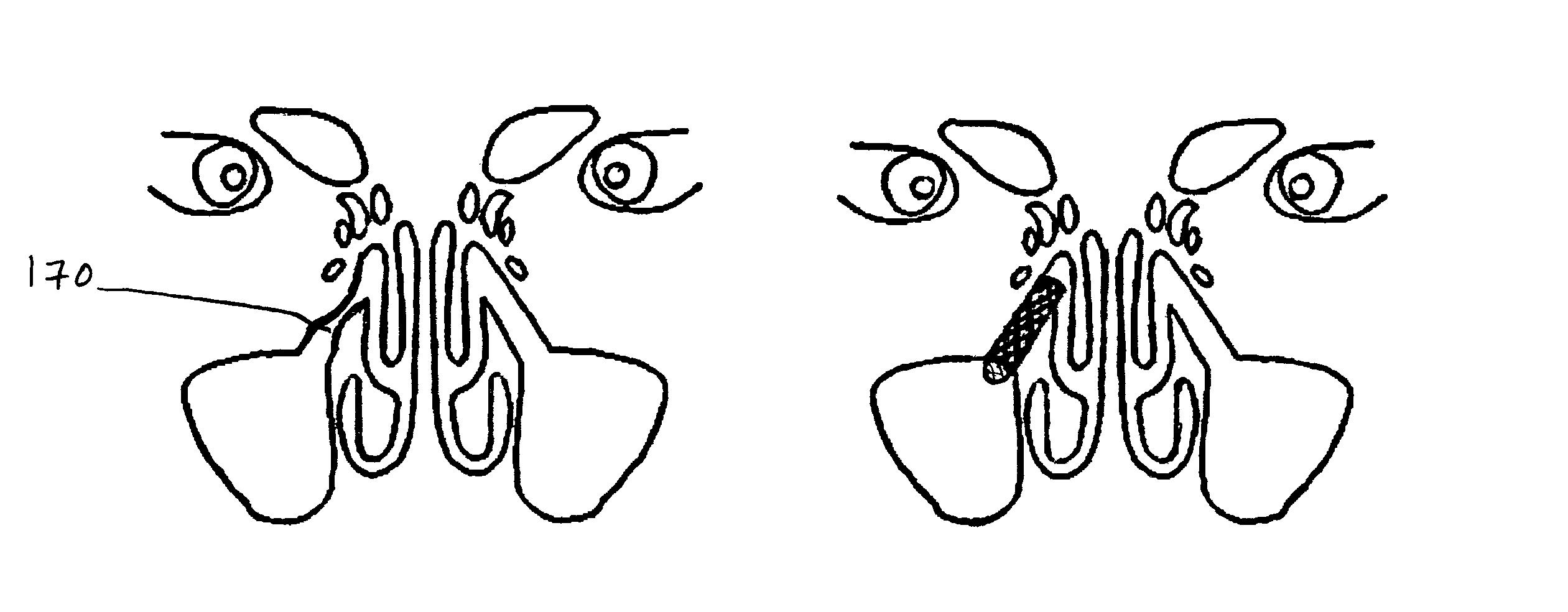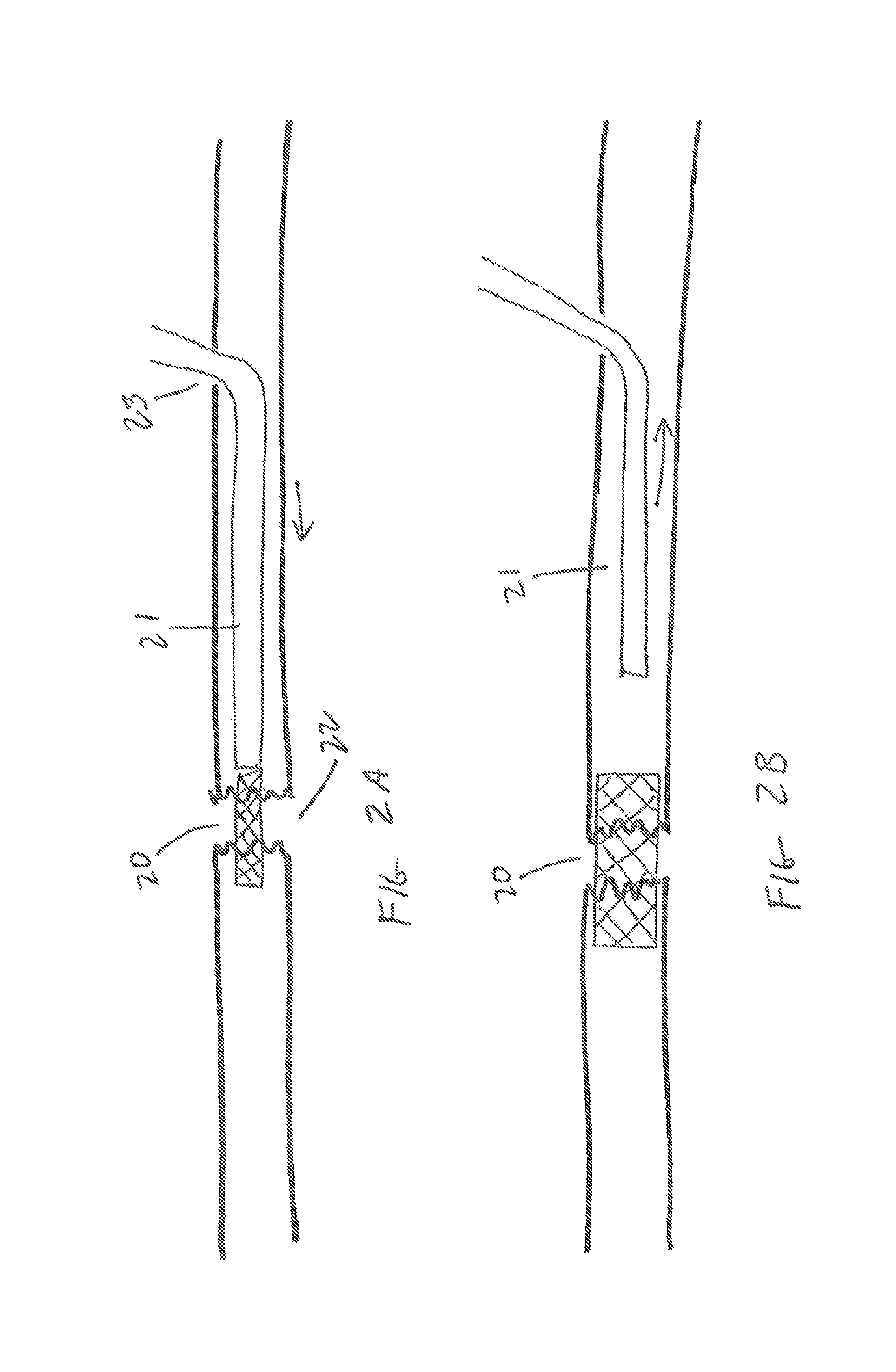Method and devices for the treatment of nasal sinus disorders
a technology for nasal sinuses and disorders, applied in the direction of osteosynthesis devices, prostheses, catheters, etc., can solve the problems of permanent misalignment of the healed bone, bone not stabilizing, and misalignment, so as to preserve the majority of bone marrow volume, reduce the surface area and mass, and preserve the effect of large quantity of bone marrow cavity
- Summary
- Abstract
- Description
- Claims
- Application Information
AI Technical Summary
Benefits of technology
Problems solved by technology
Method used
Image
Examples
Embodiment Construction
[0131]Throughout the description the term BRIDGE refers to a expandable device that is used to fixate or repair bone fractures. The device may be made of metals such as stainless steel, tantalum, titanium, Nitinol or Elgiloy and it may form an electrode for electrical stimulation. One or more electrodes may be associated with it. The BRIDGE may incorporate fiber optics for imaging, sensing, or the transmission of energy to heat, ablate, or illuminate. The device may also be made from a plastic or other non-metallic material. The BRIDGE may also incorporate a covering of polymer or other materials. The BRIDGE may also be a composition of different materials. The BRIDGE may be smooth or have cutting or abrasive surfaces. The BRIDGE can be self-expanding or use a device such as a balloon catheter to mechanically expand or further expand it. In addition, other means of expanding the BRIDGE may be utilized such as any mechanical means of expansion, or thermal, vibrational, electrical, hy...
PUM
 Login to View More
Login to View More Abstract
Description
Claims
Application Information
 Login to View More
Login to View More - R&D
- Intellectual Property
- Life Sciences
- Materials
- Tech Scout
- Unparalleled Data Quality
- Higher Quality Content
- 60% Fewer Hallucinations
Browse by: Latest US Patents, China's latest patents, Technical Efficacy Thesaurus, Application Domain, Technology Topic, Popular Technical Reports.
© 2025 PatSnap. All rights reserved.Legal|Privacy policy|Modern Slavery Act Transparency Statement|Sitemap|About US| Contact US: help@patsnap.com



